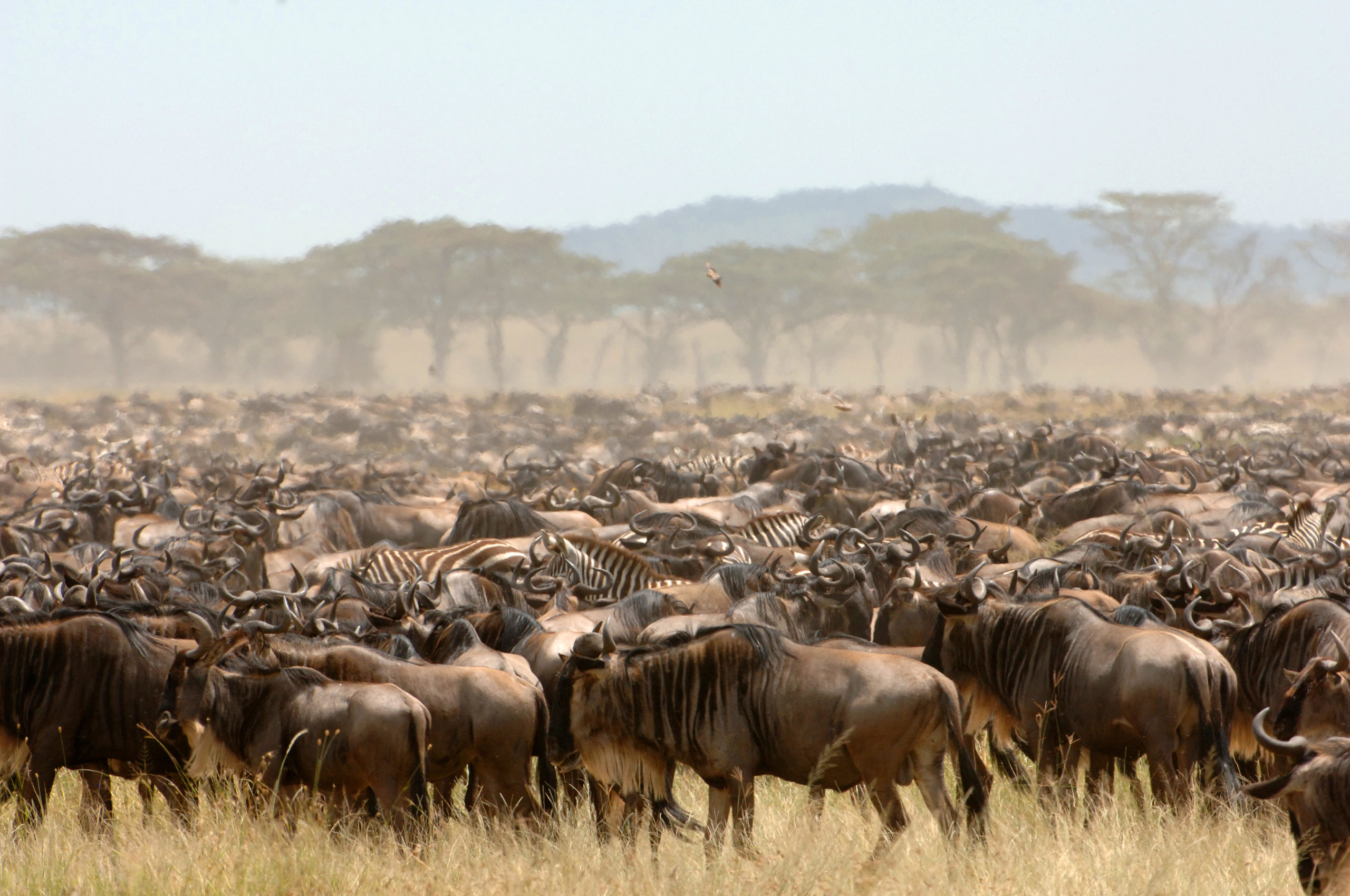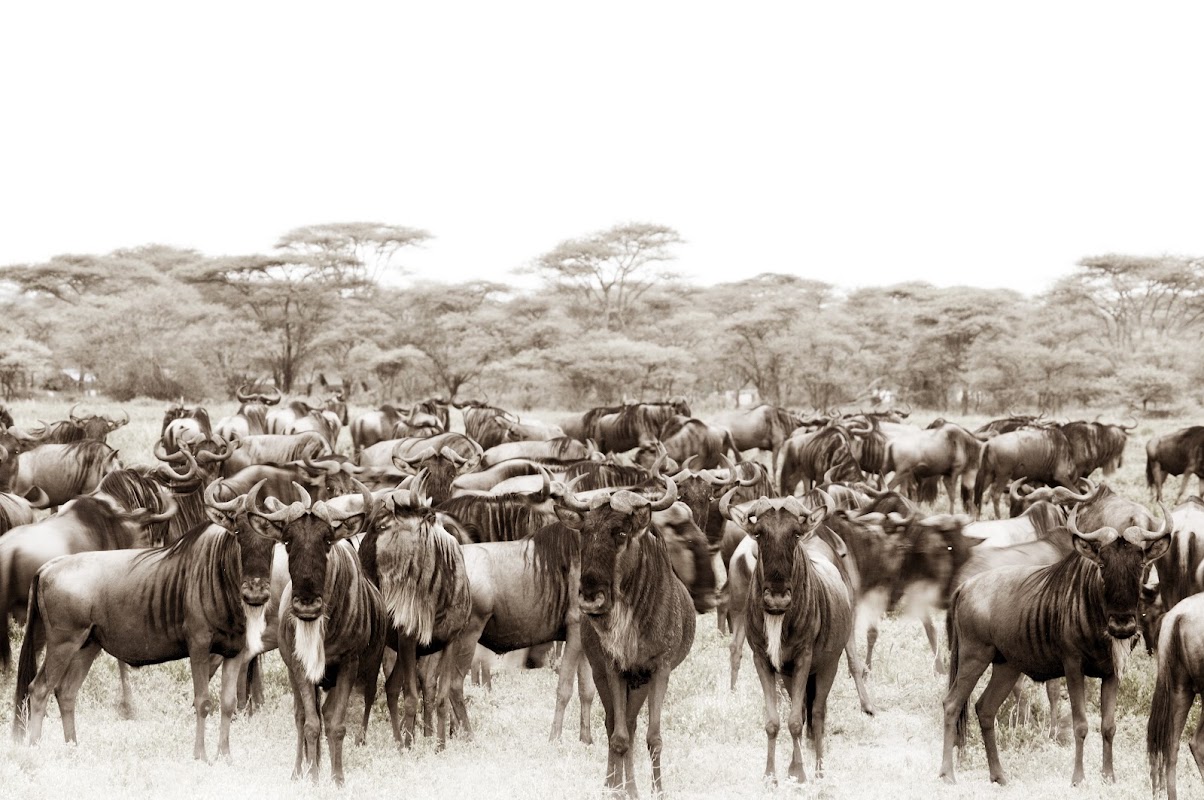The Great Wildebeest Migration in Tanzania
The Great Wildebeest Migration in Tanzania is an experience that should be on your bucket list. Considered as one of the most impressive natural spectacles on Earth, this phenomenon attracts thousands of visitors from around the world every year. But when is the best time to see The Great Wildebeest Migration in Tanzania?
The Great Wildebeest Migration is an annual movement of millions of wildebeest, zebras, and other herbivores between the Serengeti National Park in Tanzania and the Masai Mara National Reserve in Kenya. This massive migration is driven by the search for fresh grazing and water, as the animals follow the seasonal rains in search of greener pastures.
The timing of The Great Wildebeest Migration varies each year due to the unpredictable nature of the rain patterns. However, there are certain periods when it is more likely to witness this incredible event.
One of the best times to see The Great Wildebeest Migration in Tanzania is during the calving season, which usually takes place from late January to early February in the southern Serengeti. This is a critical time for the wildebeest as they give birth to their young in large numbers. The vast open plains of the southern Serengeti become a nursery for the newborns, attracting predators such as lions, hyenas, and cheetahs. Witnessing the sheer number of wildebeest giving birth and the dramatic interactions between predator and prey is a truly remarkable experience.
Another prime time to see The Great Wildebeest Migration is during the dry season, which typically occurs from June to October. During this time, the herds begin their journey northward in search of water and food. The wildebeest, zebras, and other herbivores form enormous columns and cross the crocodile-infested Grumeti River and Mara River, creating a spectacle that is both thrilling and awe-inspiring. The river crossings are one of the most sought-after events for wildlife enthusiasts, as they often result in dramatic scenes of chaos and survival.
It is important to note that the precise timing of The Great Wildebeest Migration can vary, as it is influenced by factors such as weather patterns and rainfall. Therefore, it is advisable to consult with an experienced safari operator or tour guide who can provide up-to-date information on the migration’s location and timing.
In conclusion, The Great Wildebeest Migration in Tanzania is an awe-inspiring natural phenomenon that should not be missed. Whether you choose to witness the calving season or the dramatic river crossings, you are guaranteed to be captivated by the sheer magnitude and beauty of this annual event. Plan your trip during the recommended times, and let the sights and sounds of The Great Wildebeest Migration in Tanzania leave you with lifelong memories
Every year, approximately two million wildebeests, joined by over half a million zebras and gazelles, embark on a remarkable journey across Tanzania’s Serengeti National Park to Masai mara in kenya. The migration is a year-round cycle, with the animals moving clockwise in search of fresh grazing grounds and water sources. This circular movement covers a distance of over 800 kilometers.
To fully experience the wonder of the Great Wildebeest Migration, many travelers opt for guided safaris. These safaris provide a front-row seat to witness the mass movement of animals, accompanied by expert guides who possess in-depth knowledge of the migration patterns. Whether it’s through open-top vehicles or hot air balloons, these safaris offer a unique opportunity to observe the drama and splendor of this natural phenomenon up close.
One of the most exhilarating and dangerous moments of the Great Wildebeest Migration is the river crossings. As the herds approach the rivers, they face the daunting task of crossing crocodile-infested waters with strong currents. The tension in the air is palpable as the animals hesitate on the riverbanks, waiting for a signal to plunge into the water. The chaos that ensues, with wildebeest leaping into the river and battling against both the treacherous currents and waiting crocodiles, can be both heart-stopping and awe-inspiring.
The Best Time to Witness the Migration
One of the best times to see The Great Wildebeest Migration in Tanzania is during the calving season, which usually takes place from late January to early February in the southern Serengeti. This is a critical time for the wildebeest as they give birth to their young in large numbers. The vast open plains of the southern Serengeti become a nursery for the newborns, attracting predators such as lions, hyenas, and cheetahs. Witnessing the sheer number of wildebeest giving birth and the dramatic interactions between predator and prey is a truly remarkable experience.
Another prime time to see The Great Wildebeest Migration is during the dry season, which typically occurs from June to October. During this time, the herds begin their journey northward in search of water and food. The wildebeest, zebras, and other herbivores form enormous columns and cross the crocodile-infested Grumeti River and Mara River, creating a spectacle that is both thrilling and awe-inspiring. The river crossings are one of the most sought-after events for wildlife enthusiasts, as they often result in dramatic scenes of chaos and survival.





